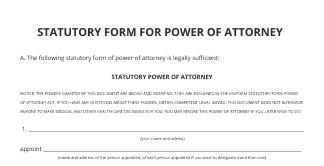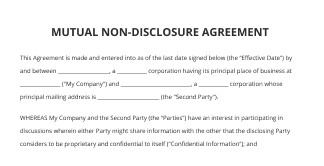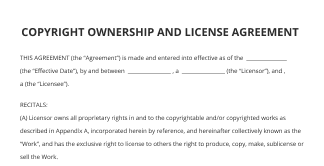Save Observer Conditional with airSlate SignNow
Upgrade your document workflow with airSlate SignNow
Flexible eSignature workflows
Fast visibility into document status
Easy and fast integration set up
Save observer conditional on any device
Comprehensive Audit Trail
Strict security standards
See airSlate SignNow eSignatures in action
airSlate SignNow solutions for better efficiency
Our user reviews speak for themselves






Why choose airSlate SignNow
-
Free 7-day trial. Choose the plan you need and try it risk-free.
-
Honest pricing for full-featured plans. airSlate SignNow offers subscription plans with no overages or hidden fees at renewal.
-
Enterprise-grade security. airSlate SignNow helps you comply with global security standards.

Your step-by-step guide — save observer conditional
Using airSlate SignNow’s eSignature any business can speed up signature workflows and eSign in real-time, delivering a better experience to customers and employees. save observer conditional in a few simple steps. Our mobile-first apps make working on the go possible, even while offline! Sign documents from anywhere in the world and close deals faster.
Follow the step-by-step guide to save observer conditional:
- Log in to your airSlate SignNow account.
- Locate your document in your folders or upload a new one.
- Open the document and make edits using the Tools menu.
- Drag & drop fillable fields, add text and sign it.
- Add multiple signers using their emails and set the signing order.
- Specify which recipients will get an executed copy.
- Use Advanced Options to limit access to the record and set an expiration date.
- Click Save and Close when completed.
In addition, there are more advanced features available to save observer conditional. Add users to your shared workspace, view teams, and track collaboration. Millions of users across the US and Europe agree that a solution that brings everything together in a single holistic workspace, is exactly what businesses need to keep workflows performing efficiently. The airSlate SignNow REST API allows you to integrate eSignatures into your app, website, CRM or cloud storage. Check out airSlate SignNow and enjoy faster, easier and overall more productive eSignature workflows!
How it works
airSlate SignNow features that users love
Get legally-binding signatures now!
What active users are saying — save observer conditional
Related searches to save observer conditional with airSlate airSlate SignNow
Save observer conditional
hello everyone my name is neeraj and I'm going to talk about how callbacks work in rails here's the agenda we will look at how before save behaves an active record then we will look at before filter and then how filters are combined into a single method and lastly after save callbacks order so let's see how callbacks currently behave here we have a user model that model has a before saved check permission and check permission is returning false if I try to save a new user record I get false that's understandable because we are returning false from before save call back now instead of returning false if I return nil from this before save call back and if I try to save a new user record what do you think will happen will it save the record or not well in this case it will go ahead and save the record this might surprise some of you that's because in Ruby in a lot of cases returning null is equivalent to returning false but not in this case so now the question is why why returning nil is not same as returning false in this case now let's look at this controller this controller has two filters and the first filter is is returning false so now the question is since the first before filter is returning false if I try to hit the index action then will the execution go ahead or will the execution will be halted well in this case execution will not be halted and in the log we can see the message from the second filter so think about it turning falls from a before filter does not halt the call back chain while returning falls from a before save call back in active record hot cycle back chain well both before filter and before save they both used a call back but they behaved differently now the question is why hopefully this is screencast will answer all these questions now let's try to understand how callback work in order to truly understand how callbacks work we will take a plain vanila class it will not be a controller it will not be an active record it will be a plain vanilla class and to that class we will add some callback features and then we will look at what the combined method is produced by active support now the question is what is that this combined method so see a model can have a number of callbacks for example it's possible for a user model to have before safe callbacks after save call backs before validation callbacks after validation callbacks in rails 2 when it's time to execute callbacks what will happen is that on the runtime on the execution time it will try to find out what are the callbacks defined on this model for example in our case when I showed you the before filter with two before filters for the user's controller at the execution time it will try to find out that okay there are two filters to before filters defined on users controller well the thing is that between one execution and another execution number of before filters on users controller in production environment is not changing but even then in rails 2 world every single time the users controller is hit it will try to find out how filters are defined on this one in really what happens is that all the callbacks are combined into a single method so when the time comes to execute callbacks that combined method gets executed and we'll see how all these things work together so here we have a plain one in our user class to this class I am including active support callbacks and then I'm defining the callbacks and I'm setting that before validate call this method to check everything and check everything I have a simple put as a statement and lastly we need to validate and self send we need all these things here because that's how callbacks work when we are dealing with active record all of these code is hidden from us and we don't see them but they are there because actual record is doing it for us now if I try to validate a new instance of a user record I will see a put as a statement checking this just goes on to validate that when I invoke the method validate before validate is big is getting involved now let's see what the combined method looks like which has been prepared by active support and this is the combined method that get actually gets executed before the validate method get' is invoked at first this might look a little bit intimidating that's because we did not define value halted block even and on those things these are this code has been produced by active support so so don't get scared at this point of time the thing of our interest is that check everything that method that we want to get executed is mentioned there and as we proceed along we will see a few more flavors now let's try to add one more callback to the class here I have checked everything one and check everything - if I look at the combined method that is produced by active support I can see that both check everything one and check everything two are present also notice that the order of check everything one and check everything two is preserved so the callbacks are executed in the order they are defined if I want to change the order I can use prepend option so in this case I'm saying prepend true for check everything - and because I said prepend true for check everything - you can see that check everything - is executed before check everything 1 now let's get back to check everything 1 being the first which was the default case and I want you to look at the return value for check everything 1 the return value of check everything 1 is being stored in variable called result but seems like result is not being used anywhere hmm well it seems it's not possible to hardly call back chain the way things are configured well there is an option called Terminator which can be used to hold the call back chain in certain conditions so now I will go ahead and define a terminator option and because of that option the new combined callback method would look something like this so now if check everything one returns false then the value of result will become false that will make halted as true and then check everything two will not get executed so this makes sense returning false from check everything one halts the callback now let's try to see what will happen if I return nil from check everything 1 returning nil will set the value of result as but result is not equal to false null is not equal to false so halted will not be true and then check everything to will get executed so this explains why returning milk from callbacks in actual record does not hardly call back chain once again to reemphasize the point I am illustrating here that the terminator option whatever was passed that got directly substituted next to halted equal to now let's look at again at the controller we discussed in the beginning in this case the first before filter instead of returning false is rendering a text and if we try to hit the index action in this case we will say that filter achieved was halted and log did not have the message that was supposed to be by the second filter so basically the execution chain was halted now why it is that way the answer lies in the combined method that is produced by active support here we can see that halted is equal to response of body hmm so if response body is true then the call that gets halted and when I do or run when I render a text in a before filter that basically sets response body is equal to true so that makes sense anytime I render a text or if I do a redirect then response body gets true and then how it gets true and that halts the whole execution chain so this is the code that's defined in action pack with the terminator option response body and this explains why returning false or nil from a before filter has absolutely no effect however if you render something or if you do a redirect then callback chain is halted once again to reemphasize the point I'm illustrating that the Terminator option that that was passed directly gets substituted as halted equal to this one's body now let's look at if analyst conditions with callbacks here fours check everything I'm saying a condition if 10 is greater than 6 now the combined method for that condition is if 10 is greater than 6 so that's good callbacks are also applied to subclasses if I want a subclass to skip a callback then option skip callback can be used here I have user class which has two callbacks check everything one and check everything two developer class extends from the user class and because of extension it it inherits both the callbacks check everything 1 and check everything 2 so the developer class is defining a skip callback which wants to skip check everything 1 here we are looking at the combined callback method for developer class and you can see that check everything 1 is totally escaped if analyst conditions supplier to child is merged with that of parent so here the parent has if condition as well as child has if condition now let's look at the combined method that is produced by active support now the combined method has the if condition from the parent as well as the if condition from the child if a proc is used as a target then combined method calls a dynamically created method so here in before validate I have lambda s in the combined method you can see that the name of the method is something which is dynamically create while testing I got the value seven you might get something else the point is that underscore callback underscore before underscore seven this method is dynamically created and this method does nothing else but just invokes the proc that was applied so let's do a quick recap of what options we saw on callbacks we saw the prepend option which lets you change the order of callbacks we saw the terminator option which helps you provide the conditions under which the callback chain should hug should get halted we look at we looked at the if and unless conditions a child can define a skip callback to skip certain callbacks from parent and lastly we looked at Brock as a target now let's look at order of after safe callbacks here I have a user model which has two after see of callbacks log 1 and log 2 if I try to save the record I will see the log in the order in which they are defined so log 1 comes first and then log 2 comes however if you have after filter the callbacks in a controller then in the log you can see that the logs you will see that log 1 which was defined which was defined as the first after filter gets executed last so after filter in controllers are executed in the reverse order of their definition in the controller this code was tested with a three is three or seven and re 187 just in case someone wants to play with it I want to say thank Greg Pollock for putting out a screencast on how to do screencast Hisle screencast inspired me to do my screencast so Gregg thanks a lot also want to say a big thanks to Jose valium for helping me understand how callbacks work this is the first time I'm doing a screencast so please and please do send your feedback okay thank you
Show moreFrequently asked questions
What is the difference between a signature stamp and an electronic signature?
How do I sign something in a PDF?
How do you ask people to sign PDF documents?
Get more for save observer conditional with airSlate SignNow
- Save electronically sign Commercial Lease Agreement Template
- Comment signed electronically Durable Power of Attorney
- Cc eSignature TV Show Pitch Template
- Allow signatory Restaurant Evaluation
- State countersign Architectural Proposal Template
- Reveal mark Agency Agreement Template
- Warrant esign settlement
- Ask signature Property Management Agreement
- Propose initials IT Project Proposal Template
- Solicit autograph Facility Rental Agreement Template
- Merge Leave of Absence Agreement byline
- Move Art Camp Registration esigning
- Populate Service Quote Template digisign
- Boost Distribution Agreement Template signature service
- Underwrite Professional Physical Therapy countersign
- Assure Professional Medical History sign
- Request Mid-Session Camper Survey initials
- Insist Employment Contract Template eSign
- Tell Catering Invoice eSignature
- Save roomer calculated
- Display company image
- Mediate receiver dropdown
- Buy Wedding Contract template esign
- Size Bartending Services Contract Template template signature block
- Display inquiry template signature service
- Inscribe Inventions Agreement template email signature
- Subscribe Insurance Quote template signatory
- Build up Residential Rental Agreement template initials






























